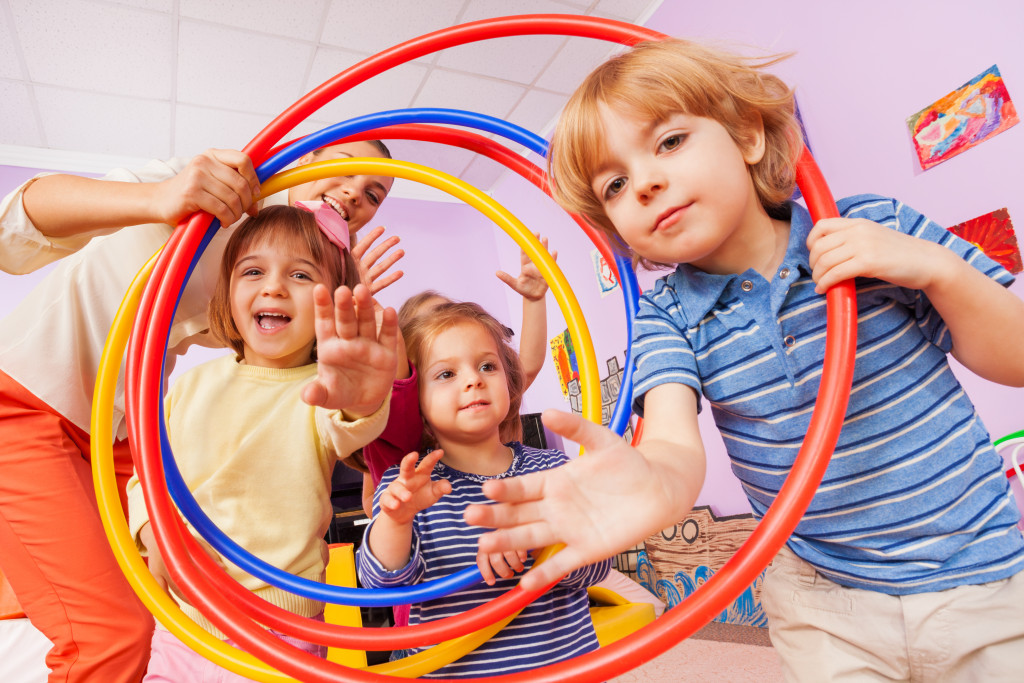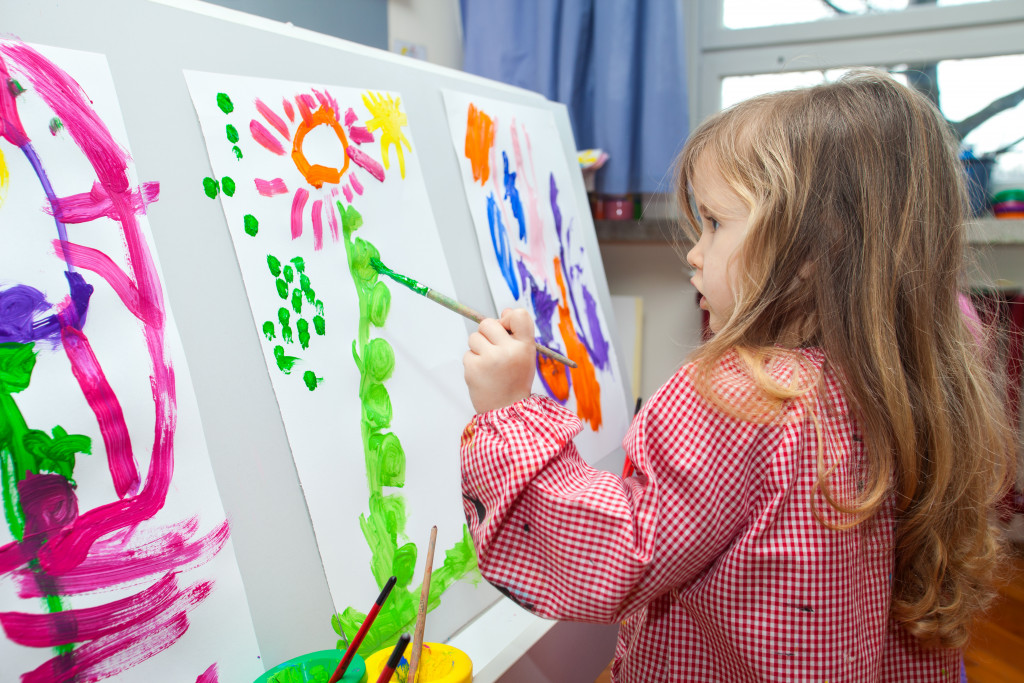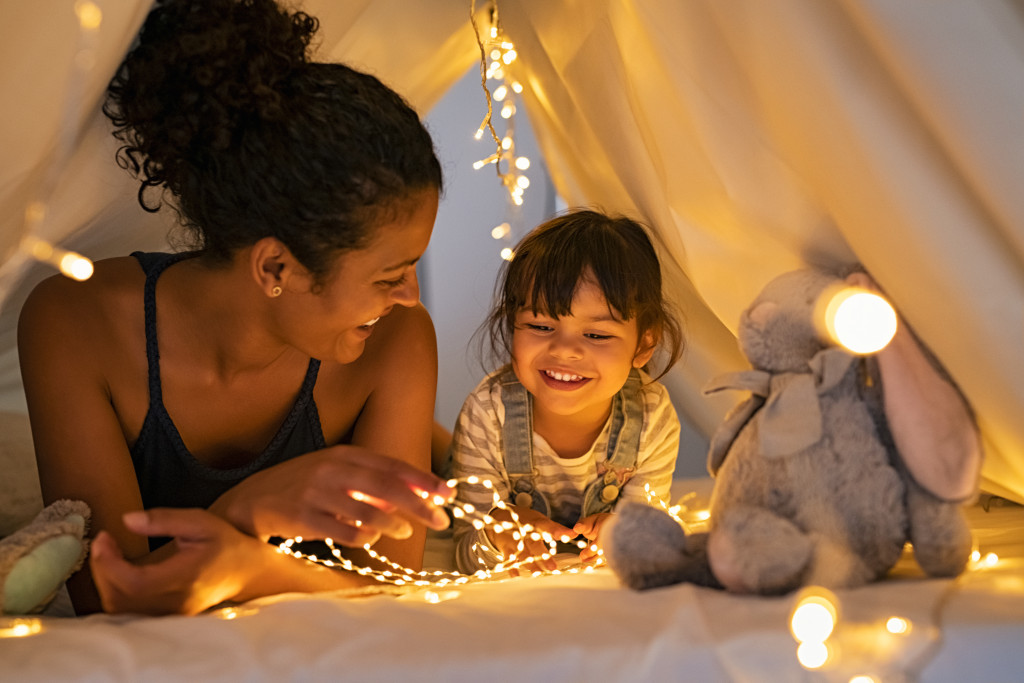- Playful activities enhance children’s cognitive, social, and emotional development, build creativity, and improve problem-solving skills.
- Home-based activities like treasure hunts or cooking promote learning, strengthen parent-child bonds, and foster creativity.
- Social activities in parks, trampoline centers, playgrounds, and sports camps foster cooperation, teamwork, and emotional intelligence.
- Extracurricular classes offer children a structured environment to pursue interests, fostering a love for learning, discipline, and social interaction.
Introducing fun to kids is of paramount importance for their overall development. Activities that spark joy, stimulate curiosity, and encourage exploration to make learning more enjoyable and contribute significantly to cognitive, social, and emotional development. According to a study published in the American Journal of Play, children who engage in playful activities tend to exhibit improved memory, superior problem-solving skills, and heightened creativity. Moreover, the Centers for Disease Control and Prevention reports that kids who participate in regular physical play show an enhanced ability to control emotions, a crucial aspect of social-emotional learning. So, every parent, teacher, or guardian must ensure children’s routines include a healthy dose of fun.
Parents, however, must be the primary source of fun, and those activities must be age-appropriate. Here are a few fun activities for children of different age groups.
Playtime at Home

Playtime at home offers numerous advantages for kids and the convenience and safety of a familiar environment. It promotes creativity as children often use household items as props for imaginative play, enhancing their cognitive and problem-solving skills. Also, home-based activities can be easily tailored to suit a child’s interests and skill level, making learning more appealing and effective.
For instance, parents can set up a treasure hunt inside the house, a fun way for kids to learn problem-solving as they decipher clues to find the hidden treasure. Building a fort with pillows and blankets stimulates creativity and fosters teamwork and cooperation. Another interesting idea could be cooking or baking together, which introduces kids to measurements, kitchen safety, and the science behind cooking, all while sharing a fun, hands-on activity. Remember, the goal is to ensure your kids enjoy the process as much as the outcome.
Parents can try many playtime activities with their kids while making learning fun. Parents must follow the child’s lead and use playtime as an opportunity to build strong relationships, as it is during these moments that kids feel closest to their parents. During this particular time, always create a safe and healthy environment for your children to explore and develop at their own pace.
Recreational Fun in Social Settings
Fun in social settings is essential for a child’s emotional and social development. Playtime with peers teaches children about empathy, sharing, and cooperation. They learn to understand and respond to different emotions, enhancing emotional intelligence. It also helps them form and maintain friendships, vital for their mental well-being.
Green Parks
Public parks provide an excellent venue for children to interact and play with other kids. Group games like tag, hide and seek, or soccer help children understand teamwork, cooperation, and sportsmanship. They offer a great source of physical exercise and stimulate cognitive development as children strategize game plans and solve problems on the spot. The sheer diversity of the park environment lends itself to various forms of imaginative play, enhancing creativity and boosting social skills.
Indoor Trampoline Parks
Another option for socially stimulating physical activity is an indoor trampoline park. These facilities are a whirlwind of fun and adventure, equipped with numerous trampolines, foam pits, and obstacle courses. Indoor trampoline sessions are a fantastic way to develop balance, coordination, and agility. Equally important, they offer an opportunity for children to interact with peers in a playful, high-energy environment. It’s a unique way to foster camaraderie and build friendships among kids as they navigate the trampolines and obstacles together.
Public Playgrounds
Public playgrounds provide an array of equipment and activities for kids to explore. They are a great way to test physical abilities, build confidence, and experiment with risk-taking in a safe environment. Group activities such as swings, seesaws, monkey bars, and slides offer plenty of fun energy while promoting teamwork and cooperation amongst children.
Youth Sports Camps
Youth sports camps are an excellent way to introduce kids to a fun and active lifestyle. They provide a conducive atmosphere for physical activity, teamwork, and healthy competition. Sports like soccer, basketball, or baseball offer great opportunities for children of all ages to learn coordination skills, develop strength and endurance, practice discipline, and hone their motor skills.
Extracurricular Classes

Extracurricular classes are an excellent avenue for children to pursue their interests in a structured and fun environment. These classes range from music, dance, and art to coding, science clubs, and chess, offering diverse opportunities beyond the regular academic curriculum. Such activities can ignite a child’s passion and foster a lifelong love for learning. The joy of mastering an instrument, the thrill of perfecting a dance routine, or the satisfaction of creating an art piece can make these classes an exciting part of a child’s day.
These classes also allow children to socialize with peers with similar interests. This shared interest becomes a foundation for meaningful friendships and fruitful collaborations. They learn to respect different perspectives, appreciate creativity, and work as a team to achieve common goals, enhancing their social and emotional skills. In addition, the structure and discipline required in these classes can instill a sense of responsibility, time management, and dedication in children, proving that learning can be fun and beneficial.
Final Thoughts
Allowing children to explore, be creative, and have a blast is essential. The key is to ensure that the activities are age-appropriate and promote social interaction, cooperation, physical activity, and emotional intelligence. Introducing fun elements into a child’s routine can go a long way in fostering strong relationships with their parents and peers and stimulating intellectual and emotional growth. Ultimately, these childhood activities lay the foundation for a healthy, happy life full of learning and fun experiences.

